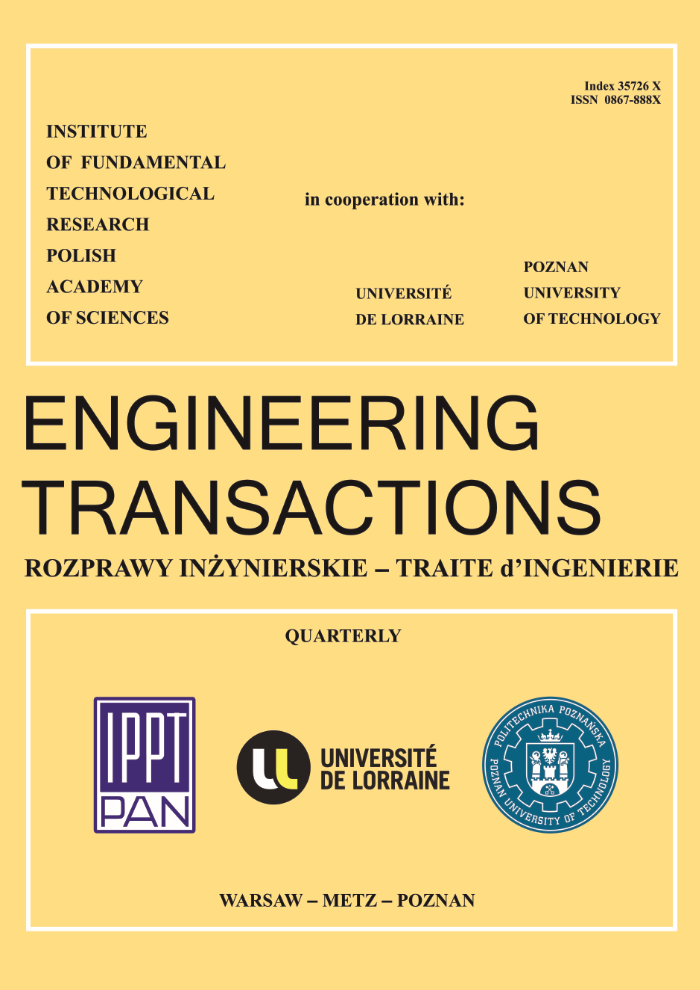Effect of Plastic Crushing of the Car Body on Optimization of Rheological Properties of Safety Belts
Abstract
The highly idealized problem of optimization of rheological properties of safety belts was formulated and solved by W. NACHBAR and J. B. SCIDPMOLDER [2]. In the present paper optimization is considered taking a more realistic description of an impact. The effect of plastic crushing of the front end of the car body is studied. The perturbation method is applied to obtain an effective solution, with the small parameter proportional to the length of the deformed front end of the vehicle. Two cases of total and partial crushing of the elements in the front of the passenger are distinguished under the assumption of constant average plastic resistance of the car body. Optimum viscoelastic properties of the safety belt are determined which maximize the initial "safe" speed of the vehicle before an impact.References
J. BORKOWSKI, Problemy bezpieczeństwa biernego pojazdów, [The aspects of vehicle passive safety, in Polish], Tech. Motoryz., 4 (322), 16-18, 1979.
W. NACHBAR, J. B. SCHTPMOLDER, Optimization of a viscoelastic structure, The seat-belt problem, Trans. ASME, J. Appl. Mech., Ser. E, 565-572, 1969.
M. ŻYCZKOWSKI, On numerical evaluation of the maximum of function, Zast. Mat. 8, 67- 74, 1965.
M. ŻYCZKOWSKI, Optimal structural design in rheology, Trans. ASME, J. Appl. Mech., Ser. E, 39-46, 1971.
M. ŻYCZKOWSKI, K. SOBIESIAK, Analytical evaluation of lower critical hydrostatic pressure for imperfect cylindrical shells of moderate length, Appendix: On the accuracy of perturbation of an analytical extremum, Int. J. Non-Linear Mech. 8, 465-478, Pergamon Press 1973.
W. NACHBAR, J. B. SCHTPMOLDER, Optimization of a viscoelastic structure, The seat-belt problem, Trans. ASME, J. Appl. Mech., Ser. E, 565-572, 1969.
M. ŻYCZKOWSKI, On numerical evaluation of the maximum of function, Zast. Mat. 8, 67- 74, 1965.
M. ŻYCZKOWSKI, Optimal structural design in rheology, Trans. ASME, J. Appl. Mech., Ser. E, 39-46, 1971.
M. ŻYCZKOWSKI, K. SOBIESIAK, Analytical evaluation of lower critical hydrostatic pressure for imperfect cylindrical shells of moderate length, Appendix: On the accuracy of perturbation of an analytical extremum, Int. J. Non-Linear Mech. 8, 465-478, Pergamon Press 1973.


